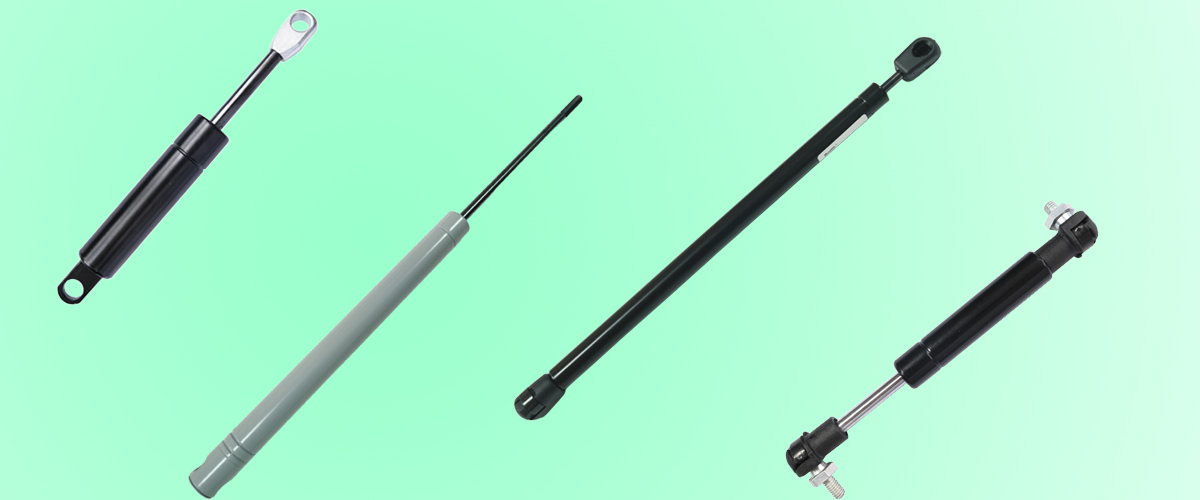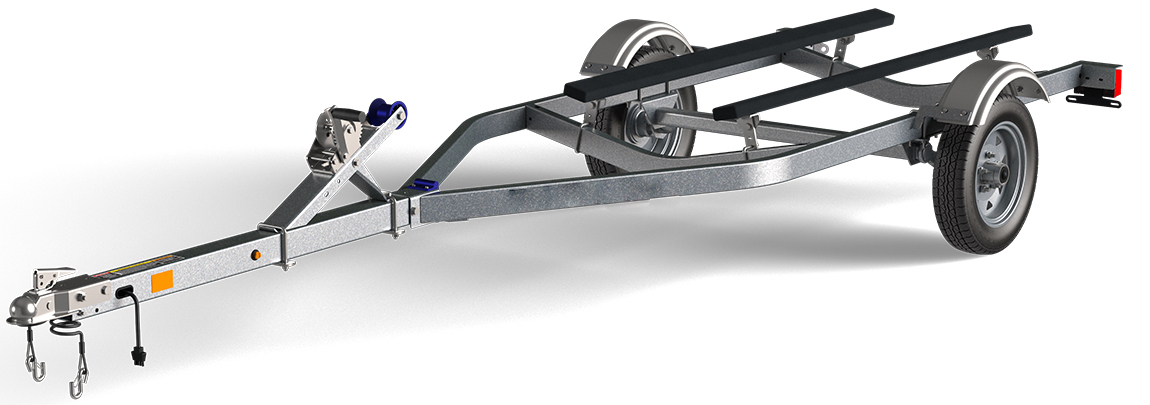Hydraulic Dampers: Imagine settling into the plush interior of a luxury car. The glove compartment features hydraulic dampers that allow it to open smoothly and close softly, adding a touch of elegance to every detail. This small yet significant feature enhances the overall driving experience, making it more enjoyable.
Imagine driving down a bumpy country road, where potholes and uneven surfaces threaten to jostle your car. Suddenly, you hit a dip, but instead of feeling a jarring impact, the vehicle glides smoothly over the terrain. This seamless experience is thanks to hydraulic dampers, which absorb shocks and vibrations, ensuring a comfortable ride. In this case, the hydraulic damper works behind the scenes, transforming a potential jolt into a gentle bounce, keeping you and your passengers at ease.
These scenarios illustrate the versatility and importance of hydraulic dampers in everyday life, from vehicles and heavy machinery to household items and entertainment.

Hydraulic Dampers Solution

Hydraulic dampers can encounter several issues, including leakage due to worn seals, which can lead to fluid loss and compromised performance. Pressure loss is another common problem, resulting from damaged dampers that fail to provide adequate resistance. Sticking can occur when dirt or debris accumulates, hindering smooth operation. Excessive noise during movement may arise from improper installation or wear. Additionally, incorrect mounting angles can negatively affect efficiency. GASTAC offers simple and safe solutions to these challenges, ensuring reliable operation and durability in various applications, enhancing user experience and functionality.
What are hydraulic dampers?
Hydraulic dampers are devices used to control and mitigate the motion of moving parts by utilizing fluid resistance. They consist of a cylinder filled with hydraulic fluid and a piston that moves through the fluid, creating resistance to motion. This design helps absorb shocks, reduce vibrations, and provide smooth operation in various applications, such as automotive systems, machinery, and furniture.
How do hydraulic dampers work?
Hydraulic dampers work by using fluid resistance to control the motion of moving parts. When a force is applied, such as when a door or lid is opened or closed, the internal piston moves through hydraulic fluid within a cylinder. This movement creates resistance, slowing down the motion and absorbing energy. The design often includes valves that regulate fluid flow, allowing for adjustable damping characteristics.
What are hydraulic dampers used for?
Automotive Suspensions: They enhance ride comfort and stability by dampening vibrations and impacts from the road.
Industrial Machinery: Used to protect equipment from sudden shocks and to improve operational smoothness.
Furniture: In cabinets and doors, hydraulic dampers ensure smooth opening and closing, reducing the risk of slamming.
Aerospace: Employed in aircraft systems to manage forces during flight and landing.
Construction: Used in buildings and bridges to absorb vibrations and improve structural integrity.
Civil Engineering: Incorporated in seismic systems to mitigate the effects of earthquakes on structures.
Bicycle Suspension: Helps in providing a smoother ride by absorbing bumps and impacts.
Marine Applications: Used in boats and ships to reduce the impact of waves and improve stability.
What are the benefits of using hydraulic dampers?
Controlled Motion: They provide smooth and controlled movement, reducing sudden jerks or impacts during operation.
Noise Reduction: Hydraulic dampers minimize noise by softening the opening and closing of doors or lids, enhancing user comfort.
Safety: They prevent injuries by ensuring that heavy doors or equipment close slowly and securely, reducing the risk of pinching or slamming.
Durability: Designed to withstand various conditions, hydraulic dampers often have a longer lifespan compared to other damping mechanisms.
Versatility: Suitable for a wide range of applications, including automotive, industrial, and home environments, they can be customized to meet specific needs.
Improved Aesthetics: Their sleek design allows for a cleaner look in cabinets and equipment, enhancing overall appearance.
Can I use hydraulic damper outdoors?
Yes, hydraulic dampers can be used outdoors, but it’s important to select models specifically designed for outdoor applications. These dampers should have weather-resistant materials and seals to withstand moisture, temperature fluctuations, and UV exposure.
How do hydraulic dampers differ from pneumatic dampers?
Hydraulic dampers and pneumatic dampers differ primarily in the medium they use for damping. Hydraulic dampers utilize fluid (typically oil) to absorb and dissipate energy, offering strong resistance and precise control, making them ideal for heavy-duty applications. In contrast, pneumatic dampers use compressed air to provide cushioning, which makes them lighter and more suited for lighter loads and applications requiring rapid movement.
How long do hydraulic damper typically last?
Hydraulic dampers typically last between 3 to 5 years, but their lifespan can vary based on factors like usage, load conditions, environmental exposure, and maintenance practices. Regular inspections and proper care can help maximize their longevity.
Are hydraulic dampers suitable for heavy-duty applications?
Yes, hydraulic dampers are suitable for heavy-duty applications. They are designed to absorb and dissipate energy effectively, making them ideal for use in machinery, vehicles, and industrial equipment. Their ability to handle high loads and provide controlled motion makes them a popular choice in demanding environments.
Can hydraulic dampers be repaired?
Hydraulic dampers can often be repaired, but it depends on the extent of the damage and the design of the damper. Common issues, such as leaks or seal failures, may be fixable by replacing seals or components. However, if the damper has internal damage or is severely degraded, it might be more cost-effective to replace it.
What are the signs of a failing hydraulic damper?
Leaking Fluid: Visible fluid around the damper indicates a seal failure.
Reduced Performance: Diminished damping ability or increased bounce in the application.
Noise: Unusual sounds, such as knocking or rattling, during operation.
Physical Damage: Cracks, dents, or corrosion on the damper body.
Overheating: Excessive heat buildup during operation.
What is the cost of hydraulic dampers?
The following is a table of approximate prices for hydraulic dampers from some brands. Prices may vary depending on specifications and purchase source:
| Brand | Price Range (USD) |
| ACE | $20 – $150 |
| CMAFH | $30 – $120 |
| Camloc | $25 – $100 |
| HYDAC | $50 – $200 |
| Suspa | $30 – $150 |
| Stabilus | $40 – $200 |
| Festo | $50 – $300 |
| MSC Direct | $30 – $200 |
| GASTAC | $10 – $20 |
Where can I buy high-quality hydraulic dampers?
GASTAC Gas Spring Manufacturer has 16 years of industry experience and specializes in producing high-quality hydraulic dampers. The company is known for offering reliable products at competitive prices, making them an appealing choice for various applications. GASTAC focuses on quality assurance and customer satisfaction, providing innovative solutions tailored to meet the specific needs of their clients. Their expertise in gas springs ensures durability and performance, positioning them as a strong alternative to more established brands.
How do I choose the right hydraulic damper for my application?
Load Capacity: Determine the weight and dynamic load the damper will need to support.
Stroke Length: Measure the distance over which the damper will operate to ensure it fits your application.
Damping Characteristics: Assess the required damping rate, which influences how quickly the damper absorbs energy and returns to rest.
Environmental Conditions: Consider factors like temperature, humidity, and exposure to chemicals that could affect the damper’s performance.
Mounting Type: Ensure the damper can be mounted correctly in your application, whether it’s through eyelets, brackets, or other fittings.
Speed of Operation: Evaluate the speed at which the damper needs to function to ensure it meets operational requirements.
Manufacturer Specifications: Review technical data sheets and consult with manufacturers to ensure the damper meets your specific needs.
How do I maintain hydraulic dampers?
Regular Inspection: Check for leaks, physical damage, and signs of wear. Look for fluid accumulation around seals.
Cleanliness: Keep the damper and surrounding areas clean to prevent dirt and debris from entering the system.
Lubrication: Ensure that moving parts are properly lubricated, if applicable. Follow manufacturer recommendations for lubrication intervals and types.
Temperature Monitoring: Avoid exposing dampers to extreme temperatures. Ensure they operate within recommended temperature ranges.
Storage: If not in use, store dampers in a dry, clean environment to prevent corrosion and degradation.
Prompt Repairs: Address any signs of failure immediately to prevent further damage or performance loss.
How do I install hydraulic dampers?
Installing hydraulic dampers typically involves the following steps:
- Gather Tools and Materials: You’ll need a wrench, screwdriver, and possibly mounting brackets. Ensure you have the correct replacement damper.
- Remove the Old Damper:
- If applicable, disconnect any connected components.
- Unscrew or unclip the old damper from its mounting points.
- Inspect Mounting Points: Check the mounting points for damage or wear. Clean any debris or rust to ensure a good fit.
- Position the New Damper:
- Align the new damper with the mounting points.
- Ensure it’s positioned correctly according to any specified orientation.
- Secure the Damper:
- Fasten the damper using screws, bolts, or clips, ensuring it’s snug but not over-tightened, which could cause damage.
- Reconnect Components: If you disconnected any parts during removal, reconnect them.
- Test the Installation: Gently test the application to ensure the damper functions correctly, checking for any abnormal noises or movement.
- Final Inspection: Ensure all fasteners are secure and that the installation is stable.


Super-Duper site! I am loving it!! Will be back later to read some more. I am taking your feeds also
Thank you for your affirmation. We will continue to update the article so that people with different understandings of gas springs can obtain valuable content.